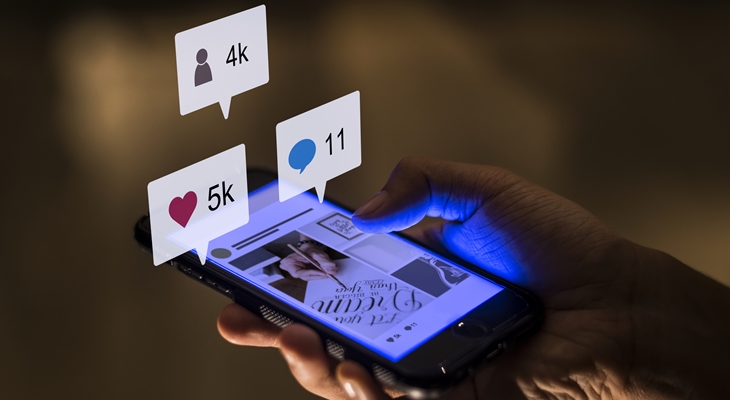The rise of Augmented Reality has transformed our lives, and its influence on our day-to-day operations cannot be ignored.
Augmented reality is not only limited to the gaming industry anymore. It has also made inroads into technology, production, hospitality, and healthcare, etc. sectors.
Augmented reality in digital marketing is also transforming how marketing teams operate nowadays. Digital marketing is an integral part of our marketing efforts.
Integrating augmented reality in digital marketing is a challenging task, but if implemented appropriately, there are a lot of benefits associated with it.
Now let’s take a look at the benefits of augmented reality in digital marketing.
5 Benefits of Augmented Reality in Digital Marketing
- Customer engagement improvement
- Enhanced CX
- Increased audience reach
- Brand image improvement
- Competitive Advantage
Including augmented reality in your digital campaigns improves user dwell time.
According to Blippar's report, marketing campaigns that use AR in their digital ads have a customer dwell time of around 75 seconds.
This figure is on the much higher side than that of traditional digital campaigns which have a dwell time of about 10 15 seconds.
Use of augmented reality assists in improving the customer experience as you can dish out content in an effective way.
Additional information provided by AR helps the customers to understand the product or the service with more ease and helps them to make the decisions easier.
You can reach out to a wider range of audiences with the help of augmented reality and also make your content more engaging in nature.
You can even run some targeted campaigns to increase the conversion rate with the help of appropriate augmented reality.
Augmented reality can help you to build and improve your organization's brand image by giving you the customers a seamless experience and making them feel as if they are actually handling the product from their smartphones.
This practice improves customer trust in your product and helps you to build your brand in a positive way.
Including augmented reality in your digital campaigns can give you a competitive advantage over your competitors as you can reach out to your target audience in a new, innovative way that other companies are not currently.
5 Real-Life Examples of Augmented Reality’s Use in Digital Marketing
Now that we have understood the benefits of augmented reality for digital marketing campaigns, we can now look at some of the most successful augmented reality enabled digital marketing campaigns.
These digital marketing campaigns have not only made inroads in the new customer base but also they have satisfied their customers with highly engaging content.
Pepsi
In 2014, Pepsi launched an AR campaign in a London bus shelter in which it appeared as if UFOs, flying saucers, a lion, and other objects were going for the Londoners.
Afterward, they posted this video on YouTube, which garnered over six million views on YouTube. This was considered as one of YouTube's most successful advertising campaign.
The enhanced user experience meant users shared the content with their friends and families, and it helped Pepsi to improve its brand image.
US Postal Service
Surprisingly, US postal service was one of the first postal service organizations to adopt augmented reality. They launched an augmented reality-based digital marketing campaign back in 2014-15.
Once you scanned the collection boxes with your smartphone, a video started playing, which included holiday surprises such as Christmas lights, dancing penguins on your smartphones.
This whole experience was a little brighter than usual for postal service customers.
BBVA
BBVA’s Valora View App was one of the first housing-related AR apps.
Many of us have tried to find the right property at the right price and failed to find it in our desired locality.
This app tries to solve this problem by offering advice on housing properties and giving insights such as an ideal purchase or renting price for the property.
These projections are achieved with the help of machine learning through simulation techniques.
The AR feature gives you the experience of actually being there at the place.
This campaign received a lot of positive reviews from the users and allowed the BBVA to grow its customer base.
BBVA has always been known for growing its digital customer base year-on-year. And digital marketing initiatives such as Valora View have ensured that they keep on doing the same.
Ikea
Most of us have suffered from buying up the furniture and finding out that it does not fit into the house.
Ikea Place provides you the platform through which you can visualize how the furniture would look like in your home.
Ikea Place can solve this unique problem that many of us face and that’s why the initiative has helped them to grow their customer base significantly.
IKEA Place is the second most popular free AR-based app on the Apple store.
Toyota AR app
Toyota launched a Spanish AR mobile ad that helps smartphone users to see an interactive and immersive view of Toyota Corolla 2020.
This ad is a clickable banner ad that opens to overlay a digital version of the car on the surroundings of the viewer through the mobile camera.
The viewers don't need to download a separate app, and it works well on the Android platforms as well.
The company was even planning to introduce the iOS version of the app as per the last update.
Augmented Reality-Digital Marketing Trends to Watch Out For:
As the companies are opting for a “Digital First” initiatives, let’s take a look at an interesting statistics from a Statista report:
- Digital Ads expenditure will cross $229 billion this year
- Digital Ads expenditure is expected to reach $335 billion by 2020
As per another Statista report, the mobile use of augmented reality is expected to reach the 200 million mark.
Launching an AR-based advertisement is quite cheaper than the traditional mediums of advertising, and you can also create ads based on locations to improve segmentation.
You can also go for advanced hyper-local advertising, which helps to attract more customers as it uses machine learning to understand consumer behavior and show them the relevant ads.
So expect many of the advertisers to go for augmented reality in one form or the other for their digital marketing campaigns in the near future.
Also Read:
7 Simulation Software Use Cases in the Healthcare Industry
IoT Applications for Smart Cities
Top 8 Augmented Reality Apps for Healthcare
What Impact Will Augmented Reality and Virtual Reality Have on Our Lives?





